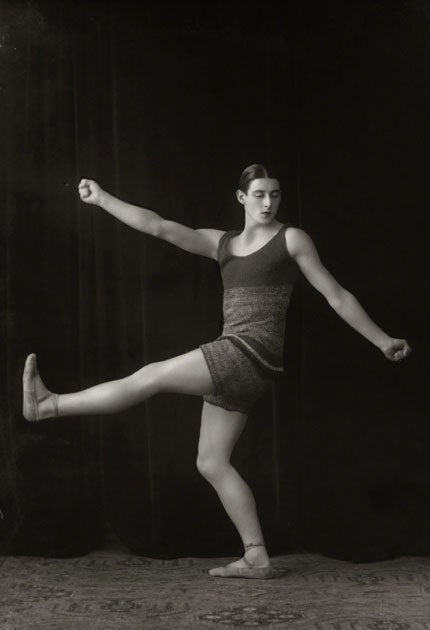Ballet in Focus, National Portrait Gallery, London
Dancers in the music halls of time

What do we know about ballet in England at the turn of the 20th century? Well, this was the moment – the exact year was 1911 – when the Ballets Russes took London by storm. And if you want more on this ever-popular subject, an exhibition is running at the V&A which not only explores in considerable detail the achievements of Sergei Diaghilev, but also tells the story of the creative collaborations between the company and a panoply of extraordinary talents that included Cocteau, Picasso, Man Ray and Matisse.
By comparison, this show at the National Portrait Gallery is a relatively small-scale affair, hidden at the back of Room 31, in the midst of a display called Camden Town and Beyond. Ridiculous. And yet these two long, double-sided cabinets, containing about 40 black and white portrait photographs, tell an important story.
With Diaghilev came a new prestige, a sense that ballet held a vibrant role in educated society, and the advent of the male ballet dancer as a subject for awe and reverence. What has been forgotten, however, is that long before the Ballets Russes arrived, ballet was a popular form of entertainment in the music hall.
The NPG exhibition displays photographs of some of the ballet stars who trod the boards of the Empire and the Alhambra, Leicester Square. All were taken by Bassano, a fashionable Baker Street studio. The display shows us some of the heroines of ballet as popular entertainment and makes clear that at least some of those who took the world by storm in the Ballets Russes had been dancing regularly in London already.
Before the costumes of Léon Bakst, there were other kinds of exoticism to marvel at. Here are two photographs of Olive Craddock, who was born to Anglo-Indian parents and who performed as a fabled Indian princess, Roshanara. We see her posing, arms snaking up and around her head, hands in the pose of serpents about to strike us dead. Her rings are the serpents' eyes. Nearby is Dame Adeline Genée, famed for her light, precise footwork (and no slouch as a mimic, either) and remembered for her starring role as Swanilda in Coppélia, in 1906. Sometimes the ballerinas are posed as if for action, bent like bows or with arms swept over heads. At other times they look like demure dames, posing for their portraits.
In the last section of the exhibition we see a recently acquired portfolio of sepia photogravures that features some of the stars of the Ballets Russes, photographed by EO Hoppé and Auguste Bert and published by the Fine Art Society in 1913. Tamara Karsavina, playing the lead in Fokine's Firebird, shudders her wing-like arms beside Adolphe Bolm, who plays the crossbow-wielding Prince Ivan Tsarevich. The crossbow is pointing straight at her. Bakst's costumes exoticise Russian peasant dress extravagantly. Nijinsky, in a body stocking complete with appliqué rose petals, is nearby, looking like a super-energised pin. History is in the making.
To 24 July (020 7306 0055; www.npg.org.uk)
Subscribe to Independent Premium to bookmark this article
Want to bookmark your favourite articles and stories to read or reference later? Start your Independent Premium subscription today.

Join our commenting forum
Join thought-provoking conversations, follow other Independent readers and see their replies